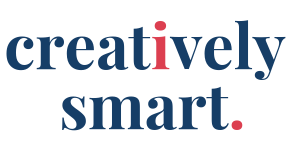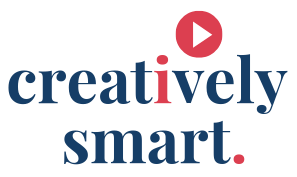
Unlocking the Power of Paid Advertising – A Comprehensive Guide
In the digital age, paid advertising has become an indispensable tool for businesses aiming to enhance their visibility, drive traffic, and increase conversions. Whether you’re a small business owner, a marketer, or a content creator, understanding the nuances of paid advertising can significantly boost your marketing efforts. This blog post delves into the essentials of paid advertising, exploring its benefits, key strategies, and best practices to maximize your return on investment (ROI).
What is Paid Advertising?
Paid advertising, also known as pay-per-click (PPC) advertising, involves paying for ad placements on various platforms such as search engines, social media, websites, and mobile apps. Unlike organic methods, paid advertising guarantees visibility to a targeted audience, thereby accelerating the reach and effectiveness of marketing campaigns.
Why Invest in Paid Advertising?
• Immediate Results: Unlike SEO and organic social media strategies, paid advertising delivers immediate visibility and traffic.
• Targeted Reach: Advanced targeting options allow you to reach specific demographics, interests, and behaviors.
• Scalability: Campaigns can be scaled up or down based on performance and budget.
• Measurable Results: Detailed analytics help track performance, measure ROI, and refine strategies.
Key Paid Advertising Platforms
Google Ads
Google Ads is one of the most popular PPC platforms, allowing businesses to display ads on Google’s search results pages, YouTube, and across its extensive display network.
Key Features:
• Search Ads: Appear at the top of Google’s search results for specific keywords.
• Display Ads: Banner ads displayed on websites within Google’s Display Network.
• Video Ads: Ads that play before or during YouTube videos.
• Shopping Ads: Showcase products directly in Google search results.
Facebook Ads
Facebook Ads enable businesses to reach users on Facebook, Instagram, Messenger, and Audience Network.
Key Features:
• Targeting Options: Demographics, interests, behaviors, and custom audiences.
• Ad Formats: Image ads, video ads, carousel ads, slideshow ads, and more.
• Budget Control: Flexible budget options to suit different advertising goals.
Instagram Ads
Instagram Ads, integrated with Facebook Ads Manager, allow businesses to reach Instagram’s highly engaged user base.
Key Features:
• Visual Appeal: High-quality images and videos to captivate the audience.
• Story Ads: Full-screen ads that appear between user stories.
• Explore Ads: Ads in the Explore tab to reach users discovering new content.
LinkedIn Ads
LinkedIn Ads are ideal for B2B marketing, enabling businesses to connect with professionals and decision-makers.
Key Features:
• Sponsored Content: Native ads that appear in the LinkedIn feed.
• Text Ads: Simple but effective ads that appear on the LinkedIn homepage.
• Sponsored InMail: Personalized messages delivered directly to LinkedIn inboxes.
Twitter Ads
Twitter Ads help businesses engage with a broader audience through promoted tweets, accounts, and trends.
Key Features:
• Promoted Tweets: Tweets that reach a larger audience beyond your followers.
• Promoted Accounts: Increase followers by promoting your Twitter account.
• Promoted Trends: Highlight trends to capture real-time engagement.
Best Practices for Paid Advertising
Define Clear Goals
Start by defining what you want to achieve with your paid advertising campaign. Common goals include increasing website traffic, generating leads, boosting sales, or enhancing brand awareness. Having clear objectives helps in creating targeted and effective campaigns.
Understand Your Audience
Conduct thorough research to understand your target audience’s demographics, interests, and online behavior. Use this data to create detailed buyer personas and tailor your ads to resonate with your audience.
Optimize Ad Creatives
Create visually appealing and engaging ad creatives that capture attention. Use high-quality images, compelling headlines, and clear calls-to-action (CTAs). A/B testing different ad variations can help determine which creatives perform best.
Use Advanced Targeting Options
Leverage the advanced targeting options available on different platforms to reach your ideal audience. Consider using custom audiences, lookalike audiences, and retargeting to refine your reach.
Monitor and Analyze Performance
Regularly monitor your campaign’s performance using the analytics tools provided by the advertising platforms. Key metrics to track include click-through rate (CTR), conversion rate, cost per click (CPC), and return on ad spend (ROAS). Use these insights to optimize your campaigns for better results.
Manage Your Budget Wisely
Set a realistic budget and allocate it strategically across different campaigns and platforms. Start with a smaller budget to test different approaches and gradually increase spending on high-performing ads.
Stay Updated with Trends
The digital advertising landscape is constantly evolving. Stay updated with the latest trends, algorithm changes, and best practices to keep your campaigns effective and competitive.
Conclusion
Paid advertising is a powerful tool that, when used effectively, can drive significant traffic, leads, and sales for your business. By understanding the various platforms, setting clear goals, targeting the right audience, and continually optimizing your campaigns, you can unlock the full potential of paid advertising. Remember, the key to success lies in continuous learning, experimentation, and adaptation to the ever-changing digital landscape. Happy advertising!







